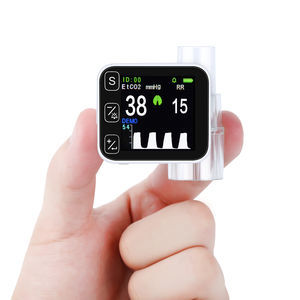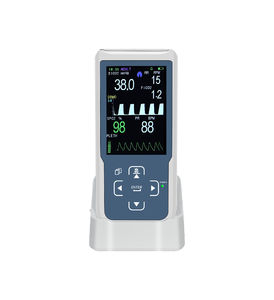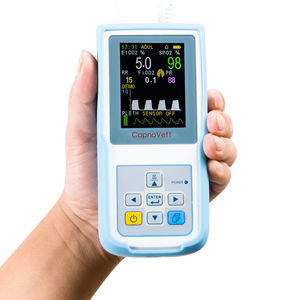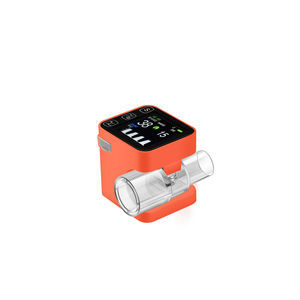
- Medical Technical Facilities
- Monitoring
- Hand-held patient monitor
- Beijing Kingst Commercial & Trade
- Company
- Products
- Catalogs
- News & Trends
- Exhibitions
Hand-held patient monitor CapnoOnepulse rateetCO2SpO2
Add to favorites
Compare this product
fo_shop_gate_exact_title
Characteristics
- Configuration
- hand-held
- Measured parameter
- pulse rate, etCO2, SpO2
- Applications
- emergency, anesthesia
- Options and accessories
- with touchscreen
- Other characteristics
- easy-to-use
- Battery life
8 h
- Weight
360 g
(12.7 oz)- Pulse rate
Min.: 30 unit
Max.: 250 unit
- Oxygen level
Min.: 0 %
Max.: 100 %
Description
It can be wirelessly connected to a mobile phone of any size and use the mobile phone screen to display data.
Features
High-precision sensor
Equipped with advanced sensor technology to provide fast and reliable carbon dioxide monitoring.
Easy to operate
The design is simple and easy for veterinarians and pet caregivers to use, reducing learning costs.
Real-time data
Provide real-time respiratory waveform and carbon dioxide concentration data to help make timely diagnosis and treatment decisions.
Application
Anesthesia Monitoring During Surgery:
During pet surgeries, precise management of anesthesia is crucial for ensuring the success of the procedure and the safety of the pet. An end-tidal CO2 monitor can provide real-time monitoring of the pet's CO2 levels, helping veterinarians assess ventilation status and the effectiveness of anesthesia. If CO2 levels rise or fall abnormally, veterinarians can promptly adjust the anesthesia dosage to keep the pet in a safe anesthetic state.
Postoperative Recovery Monitoring:
The postoperative recovery period is critical for pets after anesthesia. An end-tidal CO2 monitor can continuously track the pet's respiratory status, offering real-time respiratory waveforms and CO2 level data. By monitoring respiratory function, veterinarians can quickly identify and address potential complications such as respiratory depression or hypoventilation, enhancing the safety of postoperative recovery.
Management of Chronic Respiratory Diseases:
For pets with chronic respiratory diseases like asthma or chronic bronchitis, an end-tidal CO2 monitor helps veterinarians and pet owners continuously monitor respiratory function.
Catalogs
Other Beijing Kingst Commercial & Trade products
EtCO2 Monitors
Related Searches
- Patient monitor
- Medical probe
- Monitoring probe
- Pulse oximetry patient monitor
- Critical care patient monitor
- Portable patient monitor
- Compact patient monitor
- Clinical patient monitor
- Capnography patient monitor
- Pulse rate patient monitor
- Patient monitor with touchscreen
- End-tidal CO2 patient monitor
- Continuous patient monitor
- Emergency patient monitor
- Tabletop patient monitor
- Vital sign sensor
- Hand-held patient monitor
- Veterinary patient monitor
- Non-invasive patient monitor
- Transport patient monitor
*Prices are pre-tax. They exclude delivery charges and customs duties and do not include additional charges for installation or activation options. Prices are indicative only and may vary by country, with changes to the cost of raw materials and exchange rates.







